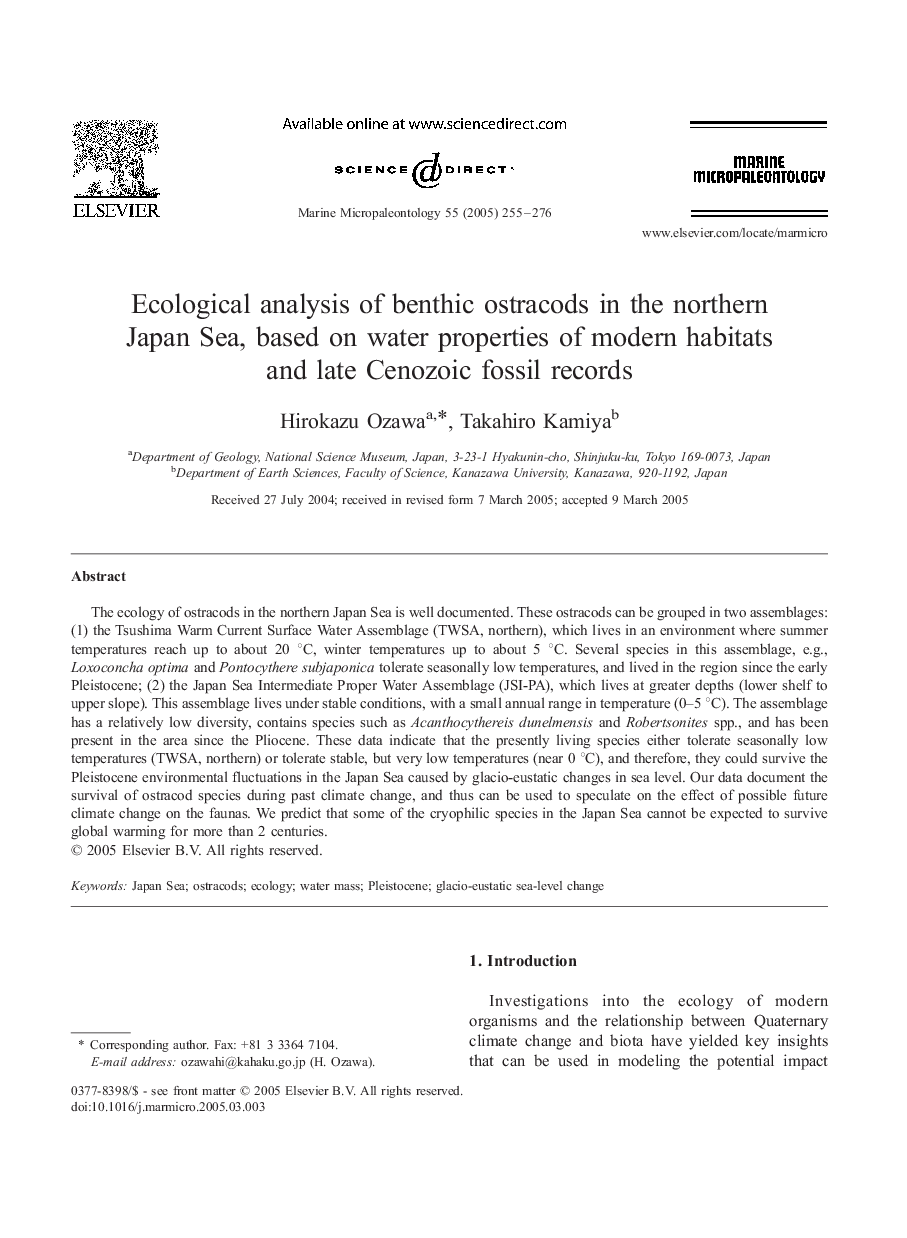| Article ID | Journal | Published Year | Pages | File Type |
|---|---|---|---|---|
| 9539708 | Marine Micropaleontology | 2005 | 22 Pages |
Abstract
The ecology of ostracods in the northern Japan Sea is well documented. These ostracods can be grouped in two assemblages: (1) the Tsushima Warm Current Surface Water Assemblage (TWSA, northern), which lives in an environment where summer temperatures reach up to about 20 °C, winter temperatures up to about 5 °C. Several species in this assemblage, e.g., Loxoconcha optima and Pontocythere subjaponica tolerate seasonally low temperatures, and lived in the region since the early Pleistocene; (2) the Japan Sea Intermediate Proper Water Assemblage (JSI-PA), which lives at greater depths (lower shelf to upper slope). This assemblage lives under stable conditions, with a small annual range in temperature (0-5 °C). The assemblage has a relatively low diversity, contains species such as Acanthocythereis dunelmensis and Robertsonites spp., and has been present in the area since the Pliocene. These data indicate that the presently living species either tolerate seasonally low temperatures (TWSA, northern) or tolerate stable, but very low temperatures (near 0 °C), and therefore, they could survive the Pleistocene environmental fluctuations in the Japan Sea caused by glacio-eustatic changes in sea level. Our data document the survival of ostracod species during past climate change, and thus can be used to speculate on the effect of possible future climate change on the faunas. We predict that some of the cryophilic species in the Japan Sea cannot be expected to survive global warming for more than 2 centuries.
Related Topics
Physical Sciences and Engineering
Earth and Planetary Sciences
Palaeontology
Authors
Hirokazu Ozawa, Takahiro Kamiya,
